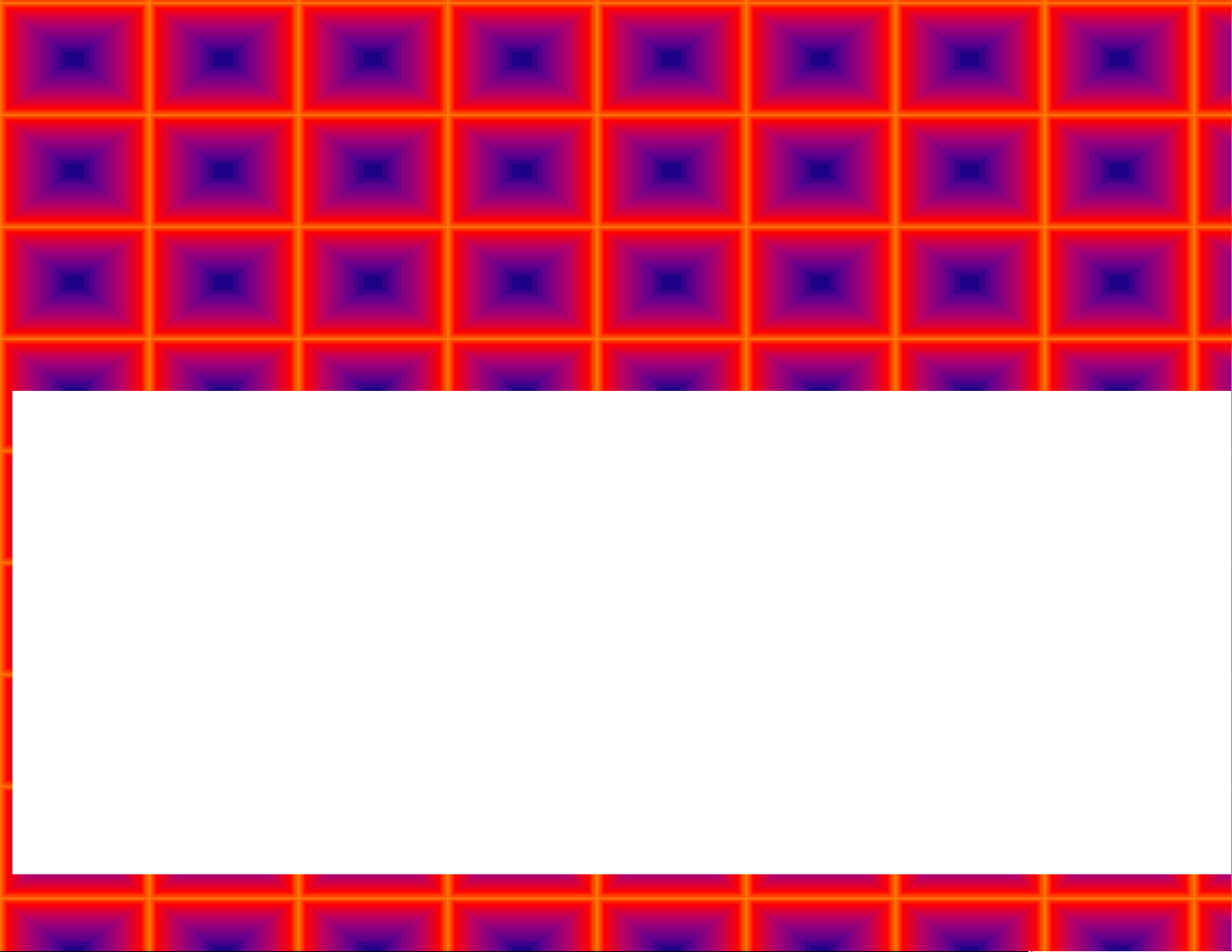
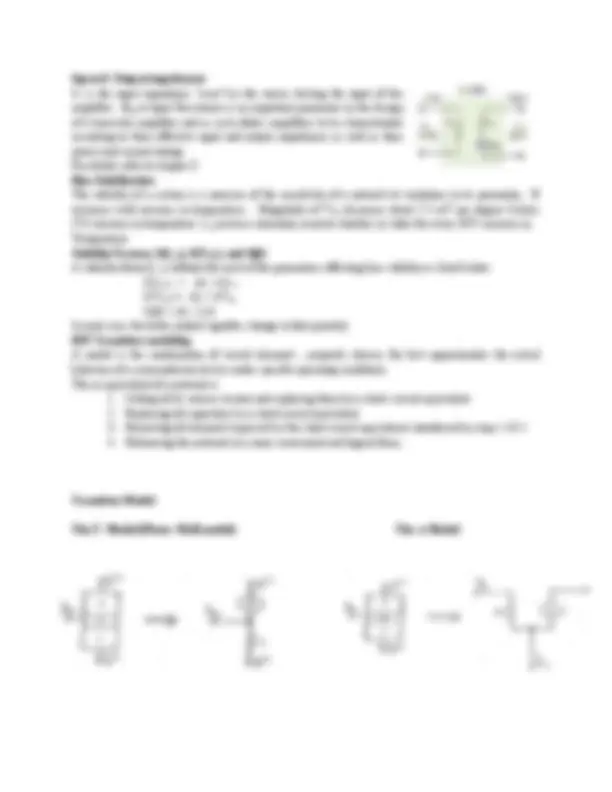
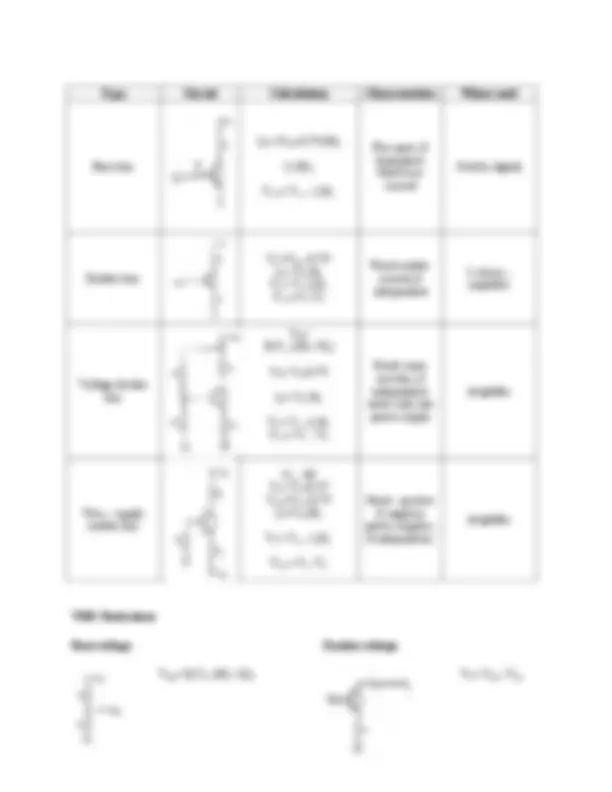
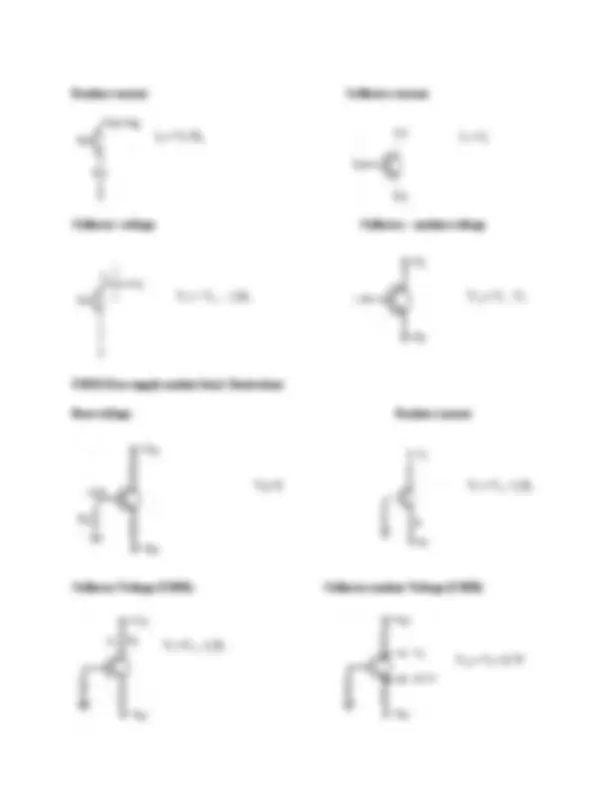
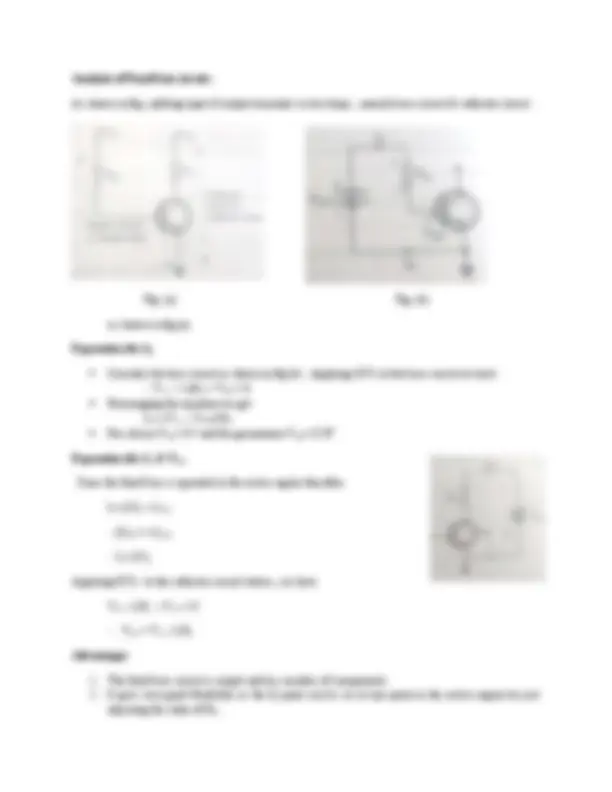
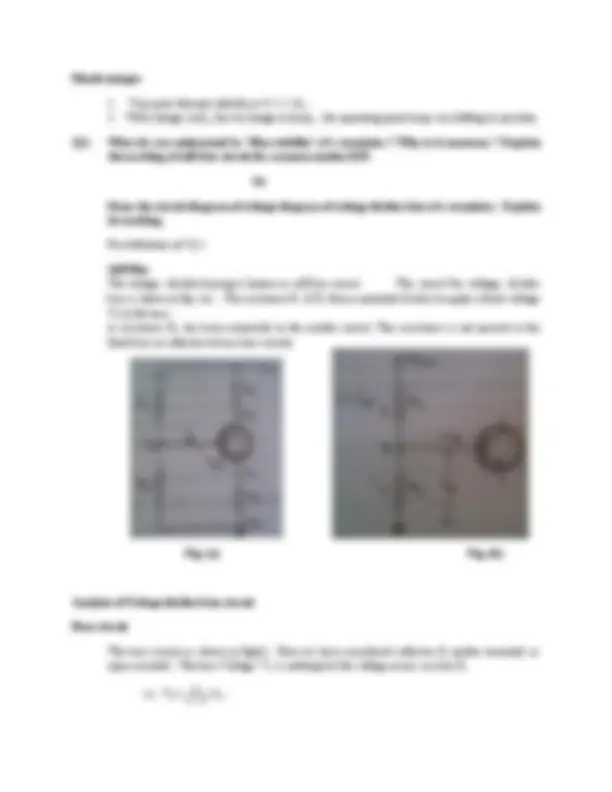
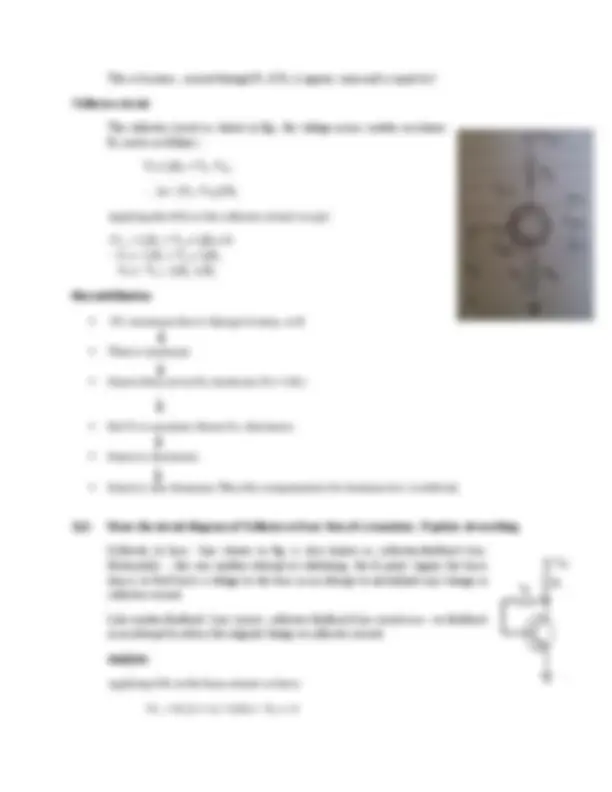
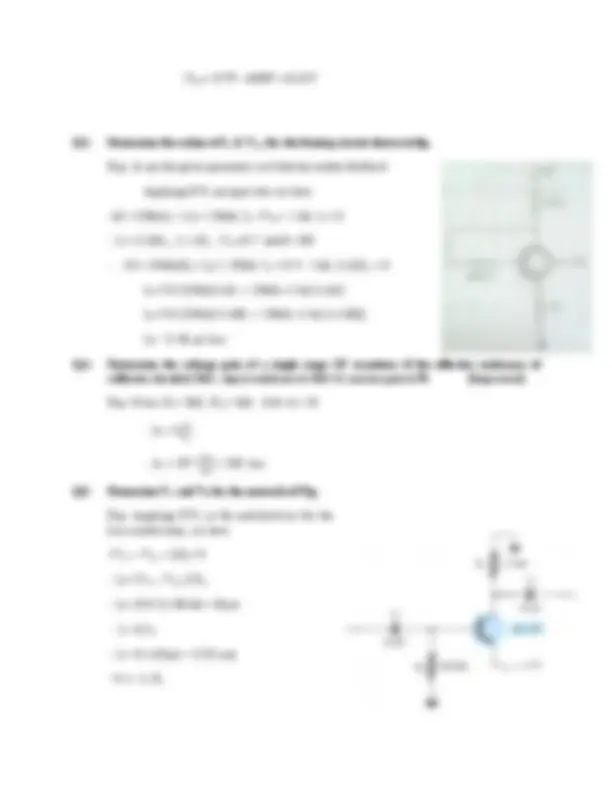
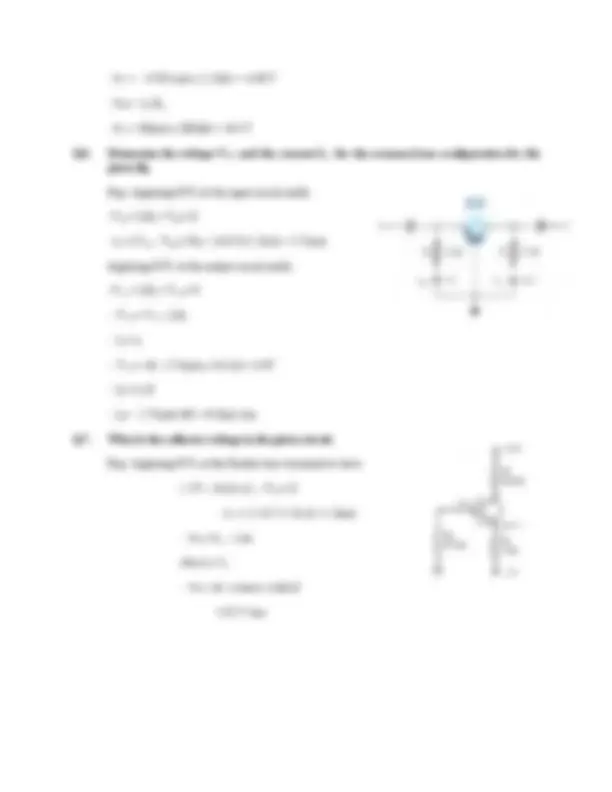


Study with the several resources on Docsity

Earn points by helping other students or get them with a premium plan


Prepare for your exams
Study with the several resources on Docsity

Earn points to download
Earn points by helping other students or get them with a premium plan
Community
Ask the community for help and clear up your study doubts
Discover the best universities in your country according to Docsity users
Free resources
Download our free guides on studying techniques, anxiety management strategies, and thesis advice from Docsity tutors
Why it is necessary ? Transistor Biasing is the process of setting a transistors DC operating voltage or current conditions to the correct level so that any AC ...
Typology: Study notes
1 / 14

This page cannot be seen from the preview
Don't miss anything!









Assistant Professor, Department of Electronics & Communication Engineering Shobhit Institute of Engineering & Technology (Deemed to-be University) NH-58, Modipuram, Meerut – 250 110, India
Chapter- 4 Transistor Biasing and Stabilization
Biasing We known that transistor can operate i n a ny of three regions of operation namely cutoff, active region and saturation. To operate the transistor in these regions the two junction of a transistor should be forward or reversed biased as shown in table Region of operation Base Emitter Junction Collector base junction Application Cut off Reversed bias Reversed bias As a switch Active Forward bias Reversed bias Amplifier Saturation Forward bias Forward bias As a switch In order to do so, we need to connect external DC power supplies with correct polarities & magnitude. This process is called as biasing of transistor. Voltage divider bias (VDB) The most famous circuit based on the emitter-bias prototype is called voltage divider bias. You can recognize it by the voltage divider in the base circuit. Accurate VDB Analysis The Key idea is for the base current to be much smaller than the current through the voltage divider. When the condition is satisfied, the voltage divider holds the base voltage almost constant and equal to the unloaded voltage out of the voltage divider. This Produces a solid Q point under all operating conditions VDB load line & Q point The load line is drawn through saturation and cut off. The Q point lies on the load line with the exact location determined by the biasing. Large variations in current gain have almost no effect on the Q point because this type of bias sets up a constant value of emitter current. Two –Supply emitter bias This design uses two power supplies: one positive and the other negative. The idea to set up a constant value of „emitter current‟. Other types of bias This section introduced negative feedback, a phenomenon that exits when an increase in an output quantity , produces decreases in an input quantity. It is brillent idea that led to voltage-divider bias. The other type of bias cannot use enough –ve feedback, so they fail to attain the performance level to voltage- divider bias. PNP Transistors These pnp devices have all current & voltages reversed from their npn counterparts. They may be used with negative power supplies; more commonly, they are used with +ve power supplies in an upside-down configuration. Reverse Feedback ratio If some percentage of an amplifier‟s output signal is connected to the input, so that the amplifier amplifies part of its own output signal, we have what is known as feedback. Feedback comes in two varieties: positive (also called regenerative), and negative (also called degenerative). Positive feedback reinforces the direction of an amplifier‟s output voltage change, while negative feedback does just the opposite.
Type Circuit Calculations Characteristics Where used
Base bias
IC=βIB
VCE= VCC - ICRC
Few parts; β dependent; fixed base current
Switch; digital
Emitter bias
Fixed emitter current; β independent
IC driver ; amplifier
Voltage divider bias
Needs more resistors; β independent; needs only one power supply
Amplifier
Two – supply emitter bias
Needs positive & negative power supplies; β independent;
Amplifier
VDB Derivations
Base voltage Emitter voltage
VBB= R 2 VCC/(R 1 + R 2 ) VE= VBB- VBE
Emitter current Collector current
Collector voltage Collector – emitter voltage
TSEB (Two supply emitter bias) Derivations
Base voltage Emitter current
Collector Voltage (TSEB) Collector-emitter Voltage (TSEB)
S‟ represents the change in IC due to change in VBE at constant ICO & βdc
Constant ICO & 𝑉𝐵𝐸
Total change in collector current
Δ𝐼𝐶= S. Δ𝐼𝐶𝑂 + S‟. Δ𝑉𝐵𝐸 + S”. βdc
Ideally the values of all the stability factors should be zero and practically they should be as small as possible. Practically the value of S is significantly higher than the other two stability factor. Hence while comparing the biasing circuits, the values of S is more significant.
Q.2. What are the various methods used for transistor biasing? Explain one method & State its advantage & disadvantages.
Biasing is a technique to aid VBB in the input circuit which is separate from the VCC used in the output circuit. The following are the most commonly used method for transistor biasing are as below :
Fixed bias circuit (Single base resistor biasing) or base bias
The simplest of all biasing is fixed bias ckt. as shown in fig.
Before biasing we were using two separate power supplies i.e. VCC & VBB to bias a transistor. But in this circuit only one power supply has been used to supply power to both collector as well as base. RB is the single base biasing resistor , hence this circuit is also called as single base resistor biasing.
Related Short Answer Questions
(i) What do you mean by biasing of a transistor? Explain with examples
Analysis of Fixed bias circuit :
As shown in fig. splitting input & output terminals in two loops , namely base circuit & collector circuit
Fig. (a) Fig. (b)
as shown in fig.(a).
Expression for IB
Consider the base circuit as shown in fig.(b). Applying KVL to the base circuit we have
Expression for IC & VCE
Since the fixed bias is operated in the active region therefore
IC= β IB + ICEO
∵ β IB >>>ICEO
∴ IC= β IB
Applying KVL to the collector circuit shown , we have
VCC- ICRC – VCE = 0
∴ VCE = VCC- ICRC
Advantages
This is because , current through R 1 & R 2 is approx. same and is equal to I.
Collector circuit
The collector circuit as shown in fig., the voltage across emitter resistance RE can be as follows :
VE= IERE = VB- VBE
∴ IE= (VB- VBE)/ RE
Applying the KVL to the collector circuit we get
Bias stabilization
If IC increases due to change in temp. or β
Then IE increases
Hence drop across RE increases (VE= IERE)
But VB is constant. Hence VBE decreases.
Hence IB decreases.
Hence IC also deceases. Thus the compensation for increase in IC is achived.
Q.4. Draw the circuit diagram of Collector to base bias of a transistor. Explain its working.
Collector to base bias shown in fig. is also known as collector-feedback bias. Historically , this was another attempt at stabilizing the Q point. Again, the basic idea is to feed back a voltage to the base in an attempt to neutralized any change in collector current.
Like emitter-feedback bias circuit , collector feedback bias circuit uses –ve feedback in an attempt to reduce the original change in collector current.
Analysis
Applying KVL in the base circuit we have
𝑉𝐶𝐶 − 𝑉𝐵𝐸 𝑅𝐶+ 𝑅𝐵 /β
Similarly applying KVL on collector side
We have VC= VCE = VCC - ICRC
Q.5. Draw the circuit diagram of two supply emitter bias of a transistor. Explain its working.
Sometimes electronic equipment has a power supply that produces both +ve and –ve supply voltages. The –ve supply forward biases the emitter diode. The +ve supply reverse bias the collector diode.
This circuit is derived from emitter bias, for this reason , we refer to it as two-supply emitter bias (TSEB).
Analysis
VB ≈ 0 V
Applying KVL from emitter to base loop in anticlockwise we have
VEE - IERE - VBE =
∴ - IE = (- VEE + VBE ) / RE = (-VEE + 0.7 ) / RE
∴ IE = (VEE - 0.7 ) / RE
V(RE)= VEE - 0.7 V
Applying KVL on collector side we have
∴ VC = VCC- ICRC
VCE= VC - VE
Q. 7. Compare Fixed bias, Collector to base bias & Voltage divider bias circuits.
Sr.
No.
Parameter Fixed bias Collector to base bias Voltage divider bias
Q.3. Determine the values of IC & VCE for the biasing circuit shown in fig.
Exp: As per the given parameters in Collector-emitter feedback
Applying KVL on input side, we have
∵ IE = (1+β)IB , IC = βIB ,VBE=0.7 and β= 100
∴ - 10 + 3.9kΩ(βIB + IB) + 250kΩ. IB + 0.7+ 1 kΩ. (1+β)IB = 0
IB= 9.3/ [3.9kΩ(1+β) + 250kΩ +1 kΩ (1+β)]
IB= 9.3/ [3.9kΩ(1+100) + 250kΩ +1 kΩ (1+100)]
IB= 12.48 μA Ans
Q.4. Determine the voltage gain of a single stage CE transistor if the effective resistance of collector circuit is 2kΩ , input resistance is 1kΩ & current gain is 50. [Important]
Exp: Given RC= 2kΩ , Rin= 1kΩ & β= Ai= 50
∵ AV = β (^) 𝑅𝑅𝑖𝑛𝐿
∴ AV = 50 * 21 kkΩΩ = 100 Ans
Q.5. Determine VC and VB for the network of Fig.
Exp: Applying KVL in the anticlockwise for the base-emitter loop , we have
+VEE – VBE – IBRB= 0
∴ IB= (VEE – VBE )/ RB
∴ IB= (9-0.7)/ 100 kΩ = 83μA
∵ IC = β IB
∴ IC= 45 x 83μA = 3.735 mA
∵VC= - IC RC
∴VC = - 3.735 mA x 1.2 kΩ = - 4.48 V
∵VB= - IB RB
∴VC = - 83mA x 100 kΩ = - 8.3 V
Q.6. Determine the voltage VCB and the current IB for the common-base configuration for the given fig.
Exp: Applying KVL to the input circuit yields
∴IE = (VEE - VBE) / RE= (4-0.7)/ 1.2k Ω = 2.75mA
Applying KVL to the output circuit yields
∴ VCB = VCC- ICRC
∵ IC≈ IE
∴ VCB = 10 - 2.75mA x 24 k Ω = 3.4V
∵ IB= IC/ β
∴ IB= 2.75mA/ 60 = 45.8μA Ans
Q.7. What is the collector voltage in the given circuit
Exp: Applying KVL at the Emitter base terminal we have
∴ IE = ( 2- 0.7 ) / 1k Ω = 1.3mA
∵ VC= VCC - ICRC
Also IC≈ IE
∴ VC= 10- 1.3mA x 3.6k Ω
5.32 V Ans